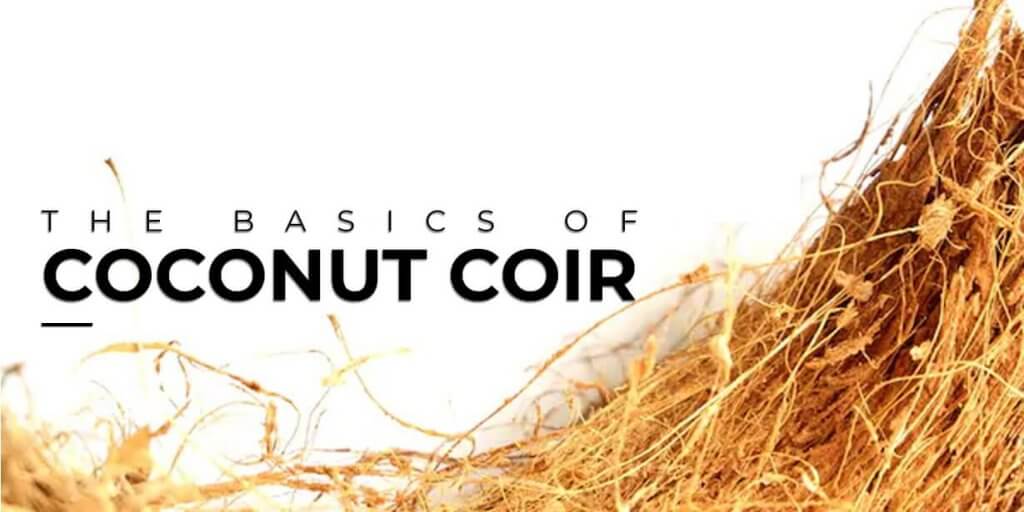The coconut tree is indeed a “Miracle Tree” for every part of it can be utilized in many ways. The young coconut can produce fresh and refreshing coconut juice. The mature coconut, on the other hand, can give us coconut oil, coconut milk, and coconut cream which are mainly use in cooking savory dishes. But, ever wonder what happens to the discarded coconut husk? This is where the Coconut Coir comes in.
Coconut Coir is another by-product of coconut tree which is mainly used in gardening. Decades ago, coconut coir is discarded and automatically found itself in garbage bins. However, it came a time that it is discovered to be a good organic compound to amend to the soil to increase its water absorbency. Now, gardeners especially those practicing hydroponics are enjoying the wonderful benefits of coconut coir for their beloved plants.
How Coconut Coir Is Made
After getting all the water and meat from the coconut, the husk is all that is left. This husk is cleaned, rinsed, and soaked in fresh water or sometimes in cured water to eliminate all microorganisms. Lastly, it is dried and set for processing to be coconut coir, fiber, chips, and/or peat.
Mainly for shipping purposes, the coir is dehydrated and compressed so it can be light for packaging. Consumers simply rehydrate the coir by soaking it into water for quite some time and it is ready to use.
Benefits of Coconut Coir
- Cheaper than the commonly used moss peat yet mimics its abilities
- Looks a lot like the soil
- Sustainable
- Easy to ship or to transport
- Enhances water absorption
- Durable
- Rot-resistant
- Fungus-resistant
- Supports the roots of the plant
Other Uses
- Household materials such as rugs, doormats, brushes, carpets
- Cottage livelihoods (basket linings)
- Upholstery
See also: Why people are using coconut coir
Many people use the words Coconut Coir, Coconut Fiber, Coconut Chips, and Coconut Peat interchangeably as if they all have the same meaning. However, these four have different functions and characteristics. Actually, Coconut Coir is the umbrella term for the coco fiber, chips, and peat. These three are all components of the coir. Let us know how the three differ from each other.
Coconut Fiber
Regarding the appearance, coconut fibers are just long strands of the coconut husk. They are not chopped and they are commonly used as soil toppers. Amongst the three, the coconut fiber is the least absorbent because of its physical makeup. Though it is not excellent in helping the plant absorb as much water, it creates and adds air pockets that let oxygen flow freely to the roots.
Coconut Chips
Basically, coconut chips are just chopped coconut husk. Some gardeners grind them before they apply them to the soil. The function of these chips can be a combination of those of coconut fiber and coconut peat. Coconut chips are excellent to help the soil absorb water while also creating air pockets. In fact, coconut chips have the highest air-to-water ratio among the three coconut coir components.
Coconut Peat
In a quick glance, coconut peat can be distinguished among the three coir components because it is the only granulated coconut husk. They can also be compared to loose tea leaves. While it has excellent water absorption qualities, it is not that good in holding air. The peat’s very fine and small particles make it hard for air to pass through and reach the plant’s roots.
However, among the three, the peat contains most nutrients. When it is aged correctly, sodium and potassium grow into it. If the peat is added with fertilizer, the sodium and potassium are replaced with calcium. Veteran gardeners buy peat which ages around 4 months to ensure that it contains the right amount of nutrients beneficial to the plants.
It is wonderful to know that nothing in the coconut tree has no use and is easily discarded. Everything in it, even the seemingly wasted coconut husk is a treasure in the form of coconut coir. Now you know the basics of Coconut Coir – that it came from husk; it is amended to the soil to enhance its absorption qualities and for the soil to hold more air; that it has three components namely coco fiber, coco chips, and coco peat which function differently, and it is a sustainable by-product, it is the right time to use Royce Food Coconut Coir for your gardening! Not only did you make your plants healthy and blooming, you also helped the environment by not putting another thing to waste.

